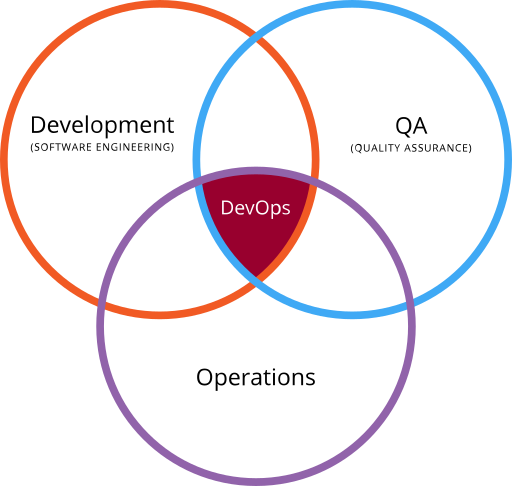Learn about DevsOps

Overview
 DevOps (a clipped compound of "software DEVelopment" and "information technology OPerationS") is a term used to refer to a set of practices that emphasize the collaboration and communication of both software developers and information technology (IT) professionals while automating the process of software delivery and infrastructure changes.
DevOps (a clipped compound of "software DEVelopment" and "information technology OPerationS") is a term used to refer to a set of practices that emphasize the collaboration and communication of both software developers and information technology (IT) professionals while automating the process of software delivery and infrastructure changes.In traditional, functionally-separated organizations, there is rarely a cross-departmental integration of these functions with IT operations. But DevOps promotes a set of processes and methods for thinking about communication and collaboration – between departments of development, QA (quality assurance), and IT operations.
Relationship to agile and continuous delivery
Agile and DevOps are similar, but, while agile software development represents a change in thinking and practice (that should lead to organizational change), DevOps places more emphasis on implementing organizational change to achieve its goals
Continuous delivery and DevOps are similar in their meanings (and are often conflated), but they are two different concepts:[19]
- DevOps has a broader scope, and centers around:
- Organizational change: specifically, to support greater collaboration between the various types of worker involved in software delivery:
- Automating the processes in software delivery.[20]
- Continuous delivery, on the other hand, is an approach to automate the delivery aspect, and focuses on:
- Bringing together different processes;
- Executing them more quickly and more frequently.
Goals
The specific goals of DevOps span the entire delivery pipeline. They include improved deployment frequency, which can lead to:
- Faster time to market;
- Lower failure rate of new releases;
- Shortened lead time between fixes;
- Faster mean time to recovery (in the event of a new release crashing or otherwise disabling the current system).
True Benefits (Performance) of DevOps
Companies that practice DevOps have reported significant benefits, including: significantly shorter time to market, improved customer satisfaction, better product quality, more reliable releases, improved productivity and efficiency, and the increased ability to build the right product by fast experimentation.[23]
However, a study released in January 2017 by F5 of almost 2,200 IT executives and industry professionals found that only one in five surveyed think DevOps had a strategic impact on their organization despite rise in usage. The same study found that only 17% identified DevOps as key, well below software as a service (42%), big data (41%) and public cloud infrastructure as a service (39%).
Scope of adoption
Some articles in the DevOps literature assume, or recommend, significant participation in DevOps initiatives from outside an organization's IT department, e.g.: "DevOps is just the agile principle, taken to the full enterprise."[38]
A survey published in January 2016 by the SaaS cloud-computing company RightScale, DevOps adoption increased from 66 percent in 2015 to 74 percent in 2016. And among larger enterprise organizations, DevOps adoption is even higher — 81 percent.
Cultural change

DevOps is more than just a tool or a process change; it inherently requires an organizational culture shift.[25] This cultural change is especially difficult, because of the conflicting nature of departmental roles:
- Operations — seeks organizational stability;
- Developers — seek change;
- Testers — seek risk reduction.[26]
Getting these groups to work cohesively is a critical challenge in enterprise DevOps adoption
Building a DevOps culture
DevOps and architecture[edit]
To practice DevOps effectively, software applications have to meet a set of architecturally significant requirements (ASRs; such as: deployability, modifiability, testability, and monitorability).[36] These ASRs require a high priority and cannot be traded off lightly.


Nhận xét
Đăng nhận xét